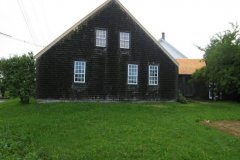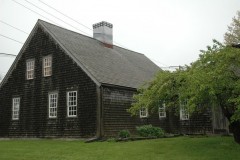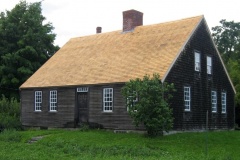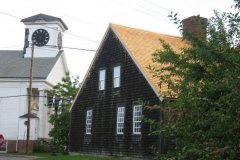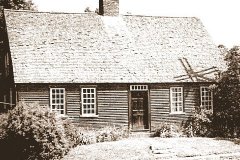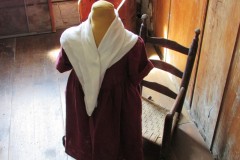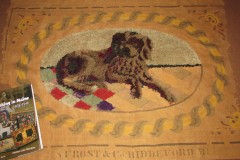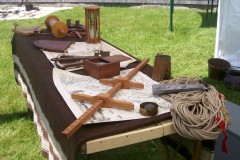Chapman-Hall House – 1754
Come Visit the 1754 Chapman-Hall Study House and Museum
For museum hours, click here
Chapman-Hall House was named to honor the two families who resided in the house over a period of 153 years, the Chapman family from 1754 to 1835, and then the Hall family until 1907. This fine example of a Maine house in the Pre-Revolutionary period, was built by Nathaniel Chapman in 1754. Nathaniel was a housewright in Ipswich, Massachusetts. At age 51 Nathaniel and his wife Miriam moved to the Damariscotta area (or Nobleboro, as it was known at the time), and began overseeing the building of houses.
Nathaniel lived to be 101 and died in 1804. The house remained in the Chapman family until 1835 when it was sold to Tilden and Elizabeth Hall. Members of the Hall family continued to live in the house until 1907 when Tilden and Elizabeth’s daughter Ann, the last remaining family member, died.
The house then was bought and sold three times. By the end of the 1950s, its condition had significantly deteriorated, and by 1960 plans were being discussed to have it torn down and replaced by a gas station. Several individuals, recognizing the historic significance of the structure, formed the Chapman-Hall House Preservation Society, making it their goal to save what was believed to be the oldest remaining house in the town of Damariscotta.
The Society purchased the property and restored the house under the guidance of Abbott Lowell Cummings, a noted historian. The Society’s founding trustees were: William Waters, Dorothy Perkins Freeman, Grevis Melville, Mabel Gay, Edwin S. Metcalf, Edward B. Denny, Jr., Ralph B. Cheney, and Harold W. Castner.
Mr. Cummings advised restoring the house to three periods of interpretation: 1754, 1790, and 1820, and this recommendation was followed.
Over a five-year period, the house was restored, opening to the public in 1965. It was placed on the National Register of Historic Places on May 19, 1970.
In December of 2008 the remaining trustees of the Chapman-Hall House Preservation Society transferred the care of the house to the Lincoln County Historical Association.
Currently, docents conduct tours of the house on weekends from early June until mid-October. Visitors can view Chapman-Hall’s unique architectural details and walk through time, as each room on the first floor represents a different time period of the house. While each room is furnished, the furnishings are not original to the house. They are, however, appropriate to the period of the room in which they are placed and offer insight into daily family life in mid-coast Maine over a 150-year period.

 Newsletter
Newsletter Join LCHA
Join LCHA Donate Now
Donate Now